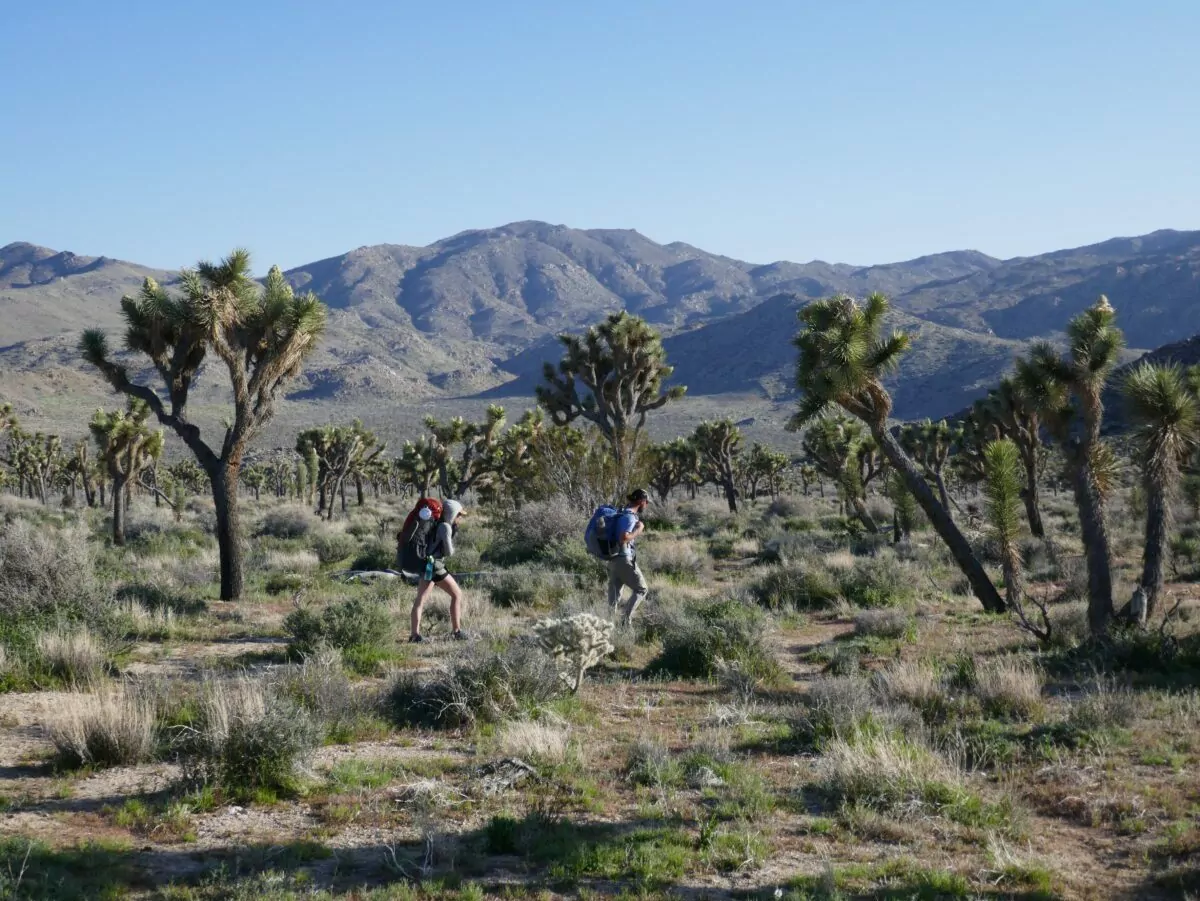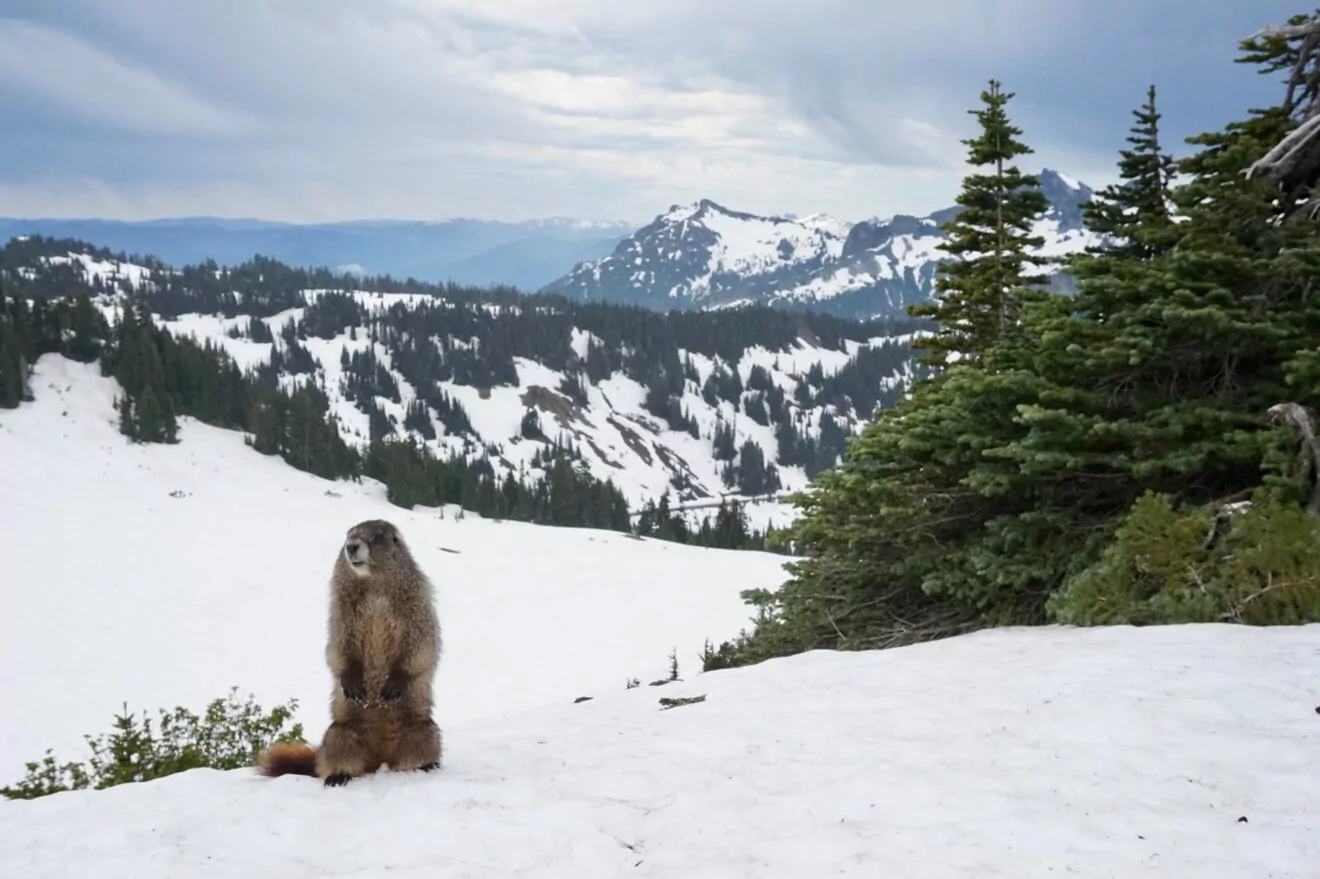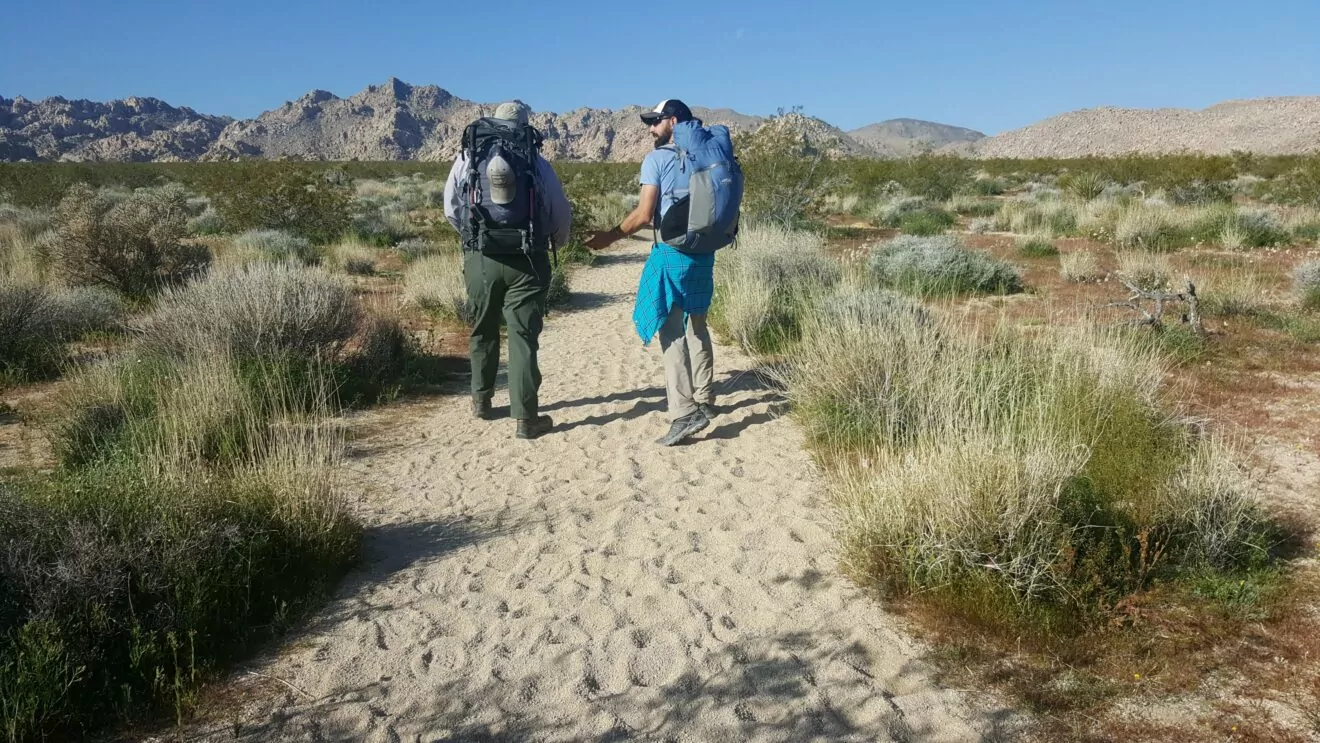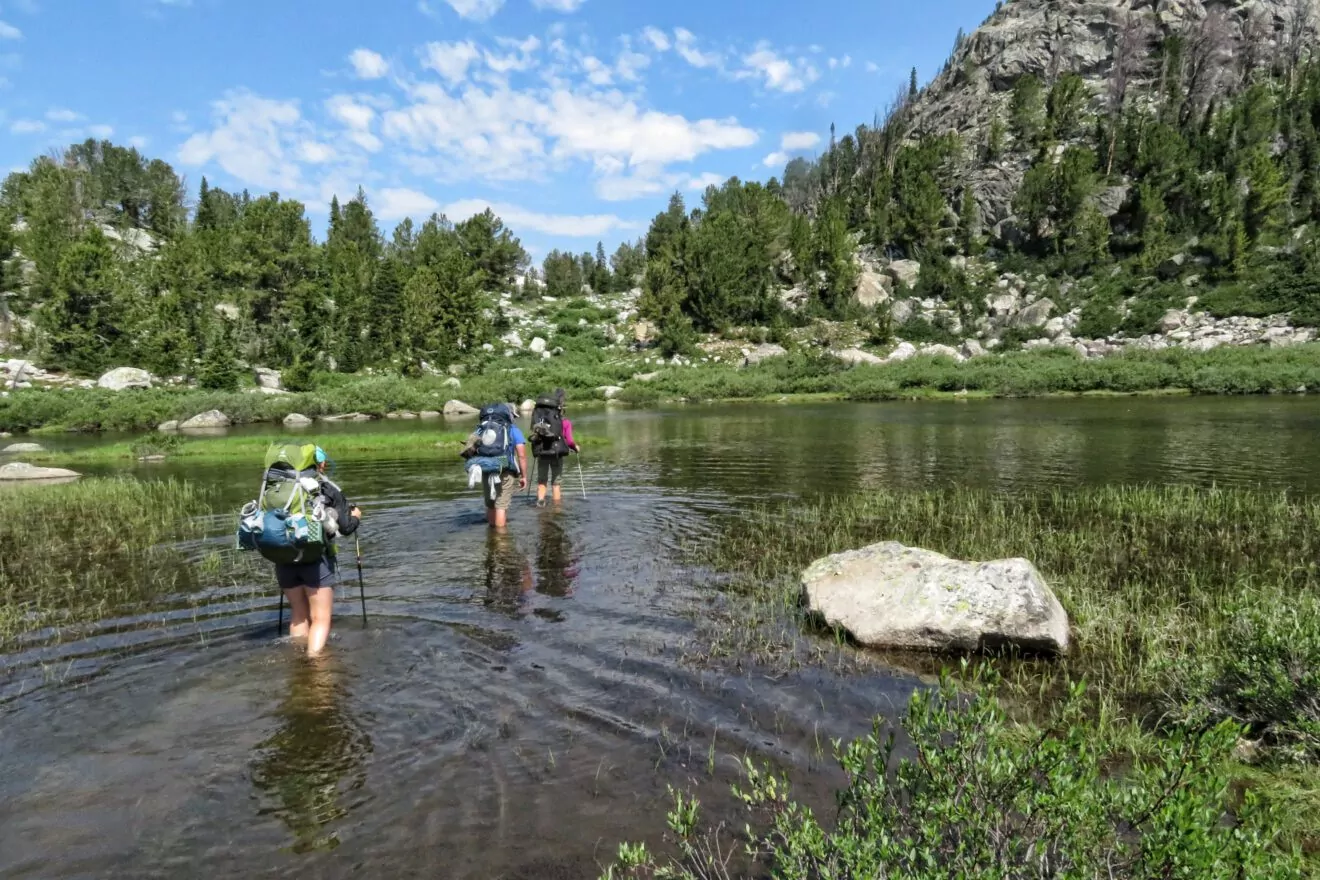What is good trail etiquette?

With more people (and domestic animals) using trails than ever before, understanding proper trail etiquette is a MUST. Practicing good trail etiquette ensures everyone has a good time, stays safe, protects the integrity of the trail and wildlife, and can enjoy all that trails have to offer.
As you spend more time on both hiking and multi-use trails, you are bound to encounter fellow trail-goers. That is why a set of ‘rules’ determines who has the right of way on the trail and establishes best practices for when you do run into another person, dog, mountain biker, or horse.
When it comes to trail etiquette, communication, consideration, and courtesy will go a LONG way towards having easy and pleasant trail interactions. The goal is for everyone to have a great time and maintain a positive atmosphere with each mile that passes. Whether they are on two feet or two wheels (or four hooves), each person deserves to feel safe and respected on the trail.
Right-of-way basics
To keep it simple, on hiking-only trails the uphill traveler has the right of way. When utilizing a multi-use trail, hikers and bikers yield to horses. Trail encounters are not always this simple, but when in doubt, you can always follow these guidelines.
How to Pass others on the Trail
Phrases to use while passing others
When you’re approaching a hiker or rider from behind, you should speak up to announce your presence to avoid frightening them. Here are some common passing phrases you can use on your next hike:
- “Good Morning! On your left, ma’am/sir.”
- “Hi! May I please pass on your left?”
- “Afternoon! Rider up on your left!”
- “Morning! Hiker coming up on your left!”
Notice how in each of these phrases, the directional left is noted? Hiking is like driving a car—you stay right and pass in the left lane. And just like driving, it’s best to give the person you are passing some space and notice; please do not wait until the very last second to say something!
Even if you know it’s proper etiquette to pass on your left, someone else may not know that. Giving them a heads up that you would like to pass on their left can be helpful.
Where and how to pass
If you are on a single-track (narrow) trail, be mindful of where you are stepping to let someone pass. Do your best to stay on the trail to avoid disturbing wildlife or delicate plants, and if you are on a ridgeline with exposure, sturdy footing will be imperative for safety.
If the trail is too narrow for someone to pass safely, it may be in everyone’s best interest to wait until the trail widens.
Passing other hikers
When two hikers are approaching one another, the uphill hiker has the right of way. It is usually easier for a downhill hiker to stop and step aside as the uphiller is working hard to carry momentum, and they have a smaller field of vision (tunnel vision).
If the uphill hiker would like a quick breather to rest their legs and take a break before pushing onward, they can let the downhill hiker know to pass.
When two separate hikers are moving uphill, and the hiker behind would like to pass, they can use one of the passing phrases above to communicate they would like to push forward.
The same trail etiquette rules for hikers also apply to trail runners.
Small Talk
We know you may want to enjoy a peaceful time on the trail, but it’s important to talk with fellow hikers for safety reasons, even if you keep it brief. Why? The small conversation you have can be a great way to learn about trail conditions and wildlife encounters or sightings.
In an emergency situation, interacting with other hikers can also be beneficial so that someone knows you are on trail. If something were to happen to you, the hiker you spoke with would be able to provide the Search and Rescue (SAR) Team or Park Rangers with information, such as what you were wearing, what time they saw you, or what your general plans were. This crucial info would increase the chances that SAR could find you.
Hiking in larger groups
At Wildland, we encourage hiking with friends or a group! You can read more about the benefits of guided group trips here. That said, solo hikers will usually have an easier time stepping aside for larger groups to pass. The same rules apply to groups: pass on the left.
Hiking single file is a good and respectable practice for larger groups to ensure everyone’s hiking boots stay on the designated path. Hiking single file also makes it easier for others to pass your group if they need to and allows for less impact on the surrounding environment if a designated “pull-out” is not accessible.
Check the park’s max group size regulation and protocol before you head out. This is especially important when your hiking group exceeds 4-8 people and will potentially mean you need to split up into smaller groups.
Hikers and Mountain Bikers
Technically, mountain bikers yield to both uphill and downhill hikers and horses. But in some circumstances, it’s easier for the hikers to step out of the way to let riders pass. This helps the rider out because it allows them to stay on their bikes. Communication between the two parties provides clarity on who is yielding to whom.
If a rider were to yield and move out of a hiker’s way allowing them to pass, they would carefully step to the side just as a hiker would do, doing their best to avoid impacting the surrounding area. If there is a situation where a hiker does not yield to an oncoming rider, the rider will need to dismount from their bike, step to the side, and give the hiker space to pass.
Mountain bikers can do a couple of small yet impactful things to make their presence known, especially around blind corners and on downhill descents.
The first is announcing their presence with a call out like “rider up,” and the second is using a small bell attached to their handlebars. This alerts hikers to oncoming bikers and allows them to be aware or move aside accordingly.
If you’re a biker and a hiker allows you to pass, remember that a smile and a “Thank You” go a long way.
How to pass a horse or stock animal on the trail
Hikers and mountain bikers yield to horses for a few reasons; horses are harder to control and have less maneuverability, horses cannot make their own directional decisions, horses take up more space on the trail, and they are very large animals that may spook easily.
The chance of coming face-to-face with a horse is low, but it’s important to know what to do. Most importantly, you don’t want to frighten or startle the horse, so if you’re approaching from behind, calmly announce yourself and ask for permission to pass.
If you are approaching from the front, step to the side of the trail and let them pass.
Rules with Nuance: Using Common Sense
Even with these guidelines in place, there may be nuance, as with most things in life.
What is the easiest and safest thing for all parties, and what makes the most sense?
If you ask yourself this, you can take the traditional rules and blend them with common sense.
For example, you are a hiker and see a mountain biker approaching. Technically, mountain bikers are supposed to yield to hikers. However, it’s usually far easier for a hiker to step aside, wave the rider through, and let the rider pass than for the mountain biker to break, hop off their bike, possibly have to unclick their pedals and move to the side – bike and all.
See? Communication, consideration, and courtesy.
On the way by, the rider should thank the hiker with a head nod, smile, quick fist bump, or verbal “thank you!”
Petiquette
Just because your four-legged fur baby is cute and fluffy doesn’t mean the rules don’t apply to them! Dogs must follow the same rules as you and some of their own.
First and foremost, only hike on dog-friendly trails. You can look online ahead of time to see if dogs are allowed. Apps such as AllTrails or the NPS website will have this information available. If pets are allowed, the land agency will have a set of rules established, such as whether or not you need to leash your dog. Packing out their waste is always a rule. Be sure to throw a couple of extra poop bags in your trail pack before you head out.
For trails that allow your dog to be off-leash, keep them within your line of sight. When other trail users are approaching (with or without a four-legged friend), recall your dog and re-leash them or keep them by your side.
And, of course, if you’re the one passing an unfamiliar dog, you should always ask before petting, just in case. Communication here allows everyone to stay safe.
Leave No Trace
The 7 Leave No Trace Principles were created to encourage and minimize the impact that trail users have on the trails, in the backcountry, and at parks. Leave No Trace, commonly referred to as LNT, gives natural and wild spaces the care they deserve. These principles keep the well-being and longevity of the outdoors in mind.
From properly packing out your trash and waste (and your dog’s) to leaving what you find, these guiding principles are essential to taking care of our parks so that future generations can enjoy them too. With increased trail and backcountry usage, these fundamentals are important to maintain the integrity of the landscapes; it’s not just polite, it’s necessary.
Other Noteworthy Etiquette Practices
Skip the Boombox and the Headphones
The disturbance music can cause to wildlife close by and its effects on the experience of being out in nature are a couple of reasons why it’s recommended to leave the speaker at home. IF you choose to listen to music out loud, be sure to turn off your music (or put it on silent) when other hikers are nearby. If no one else is around, please keep the music low enough that you can hear your surroundings.
For MAJOR safety reasons, it’s encouraged not to wear headphones while hiking or riding. You might not hear someone coming up behind you, you could miss calls for help, or even sounds of animals nearby.
If you do, only wear your headphones on one side. This allows you to hear what’s going on around you and stay aware of other recreators or wildlife if they are approaching.

Don’t Pet or Feed the wildlife
Wild animals are just that: wild. They are not prepared to consume human food; it can be harmful to the animal. Once an animal has human food, they may stop foraging for natural food sources and rely on humans for nutrients, which will put them at risk during the low or off-season.
Wildlife regulations, which are implemented for your safety and the safety of the animals, are usually posted online, at the trailhead, or throughout the trail. It can be tempting to get close to a moose or other not-often-seen animal, but things can go south quickly, and you could be in serious danger.
Minimum viewing distance guidelines should be taken very seriously. This gives the wildlife room to move about naturally and for recreators to stay at a safe distance. Most parks require a minimum of 25 yards away from most animals and up to 100 yards minimum for predators like bears. Always be sure to double-check online because each park is unique.
If you notice an animal is not moving from your projected path, you may need to turn around (from a safe distance). It’s a courtesy to communicate to other recreators you pass on your way back about the wildlife spotting or encounter.
Take Note of Trail Conditions
Bookmark your hike for another day if the trails are too muddy or wet, especially on rocky trails.
It’s not uncommon to see hikers and riders go around puddles or large patches of mud. This, unfortunately, causes ‘trail widening’ and negatively impacts the landscape by creating unnatural “widened” paths. When conditions are slippery, it can be dangerous for you and potentially damaging to the trail and the surrounding ecosystem if you have to frequently step off the trail.
Furthermore, hiking on muddy trails can leave lasting impacts. When the trails dry, the footprints could leave deep imprints from usage in poor trail conditions.
If something doesn’t feel right, you are allowed to turn back around. Trust your gut, make safety your priority, and remember that good trail etiquette allows for everyone to have a better, safer, and more environmentally friendly good time.






